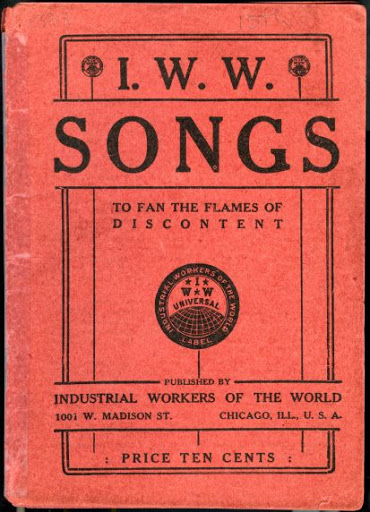Solidarity Forever
Words by Ralph Chaplin; tune "Battle Hymn of the Republic," 1915 |

 |
What was happening in the labor movement in 1915 when this song was written? |
 |
How would you describe the emotional tone of this song? Angry, indignant, righteous, enraged, entitled, etc. |
 |
Who are "they" in verse 3? Why did the singers of this song feel opposed to them? |
 |
What "power" did the unions have? To organize, to work only when wages and conditions were fair. In what ways did they organize and fight? When they used their power, how did the "bosses" respond? How successful were unions around 1915? |
 |
When did unions finally see progress? What opened the door to collective bargaining and better conditions? What work conditions today were won by unions? 8-hr. day, 5-day week, workmen's compensation, minimum wage. Did workers ever manage to "master and own" the companies they worked for? Where? Employee-owned companies. |
 |
What tune did the author set his song to? "Battle Hymn of the Republic." Was this a good choice? Why or why not? How does the tune affect the song's meaning? |
|

"Solidarity Forever" performed by Pete Seeger on If I Had a Hammer: Songs of Hope and Struggle, Smithsonian Folkways, © 1998. Available on iTunes, Spotify, and YouTube.
Pete Seeger (1919–2014) made this recording with the Alamanac Singers, who hum behind the verses and join in the chorus, to show that they are united in their strength. Like all of Seeger's political recordings, it is sung with great conviction. |

View the music and lyrics for "Solidarity Forever."
|
|
 Ralph Chaplin (1887–1961) was a famous poet, artist, writer, and organizer for the Industrial Workers of the World. He joined the I.W.W., known as "Wobblies," in 1913 and became one of the premier writers in the organization. Chaplin published his autobiography, Wobbly, in 1948. Ralph Chaplin (1887–1961) was a famous poet, artist, writer, and organizer for the Industrial Workers of the World. He joined the I.W.W., known as "Wobblies," in 1913 and became one of the premier writers in the organization. Chaplin published his autobiography, Wobbly, in 1948.
 |
| International Workers of the World Little Red Songbook. |
The idea for this song came to him while he was in West Virginia helping the coal miners in the great Kanawha Valley strike, in January of 1915. Chaplin's use of the tune "Battle Hymn of the Republic" (Unit 4) gives this song the feeling of a rallying cry to energize audiences by fostering a connection with religion, patriotism and the Civil War.
"Solidarity Forever" remained an anthem of the labor movement through the middle of the twentieth century. The idea behind this song gave rise to later workers' struggles, most notably the trade-union uprising in Poland beginning in 1980 that overthrew the Communist regime in 1989.
|
|


